Growing and caring for royal geraniums
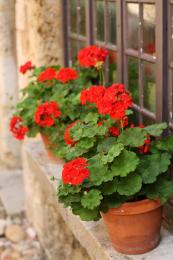
Royal geranium or pelargonium blooms unusually beautifully and fully justifies the word “royal” in its name. Large flowers with wavy edges of bright colors make it stand out among other flowering plants and attract attention. Its jagged, rough leaves are also beautiful.
Content:
- Growing and care
- Watering
- Winter peace
- Transfer
- Trimming
- Reproduction
- Increasing flowering time using grafting
Growing and care
Growing and caring for royal geraniums is not particularly difficult, but in order to achieve long-term flowering, you need to know some of the characteristics of the plant. Pelargonium in winter is severely lacking in light and it stretches out, so in the spring it is necessary to carry out formative pruning, while replacing the top layer of soil with a fresh substrate, without replanting.
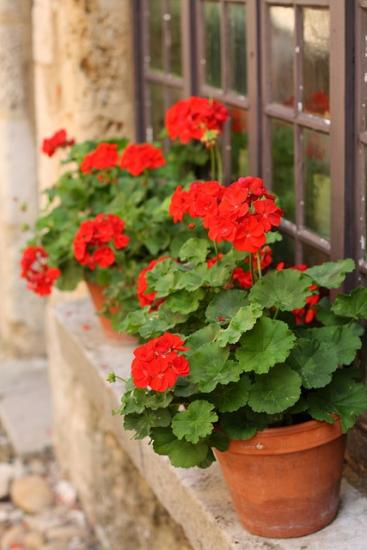
In summer, this aristocrat should not be taken out into the garden; it does not tolerate strong currents of fresh air and rain. However, it can be placed in closed areas: balcony, terrace or veranda.
Watering
Royal geranium is often sick from waterlogging, but we also shouldn’t allow the soil to dry out. Watering should be done only with settled water at room temperature, or even better - boiled. To avoid soil compaction, which this plant does not like so much, you should water through a tray; the roots will absorb exactly as much moisture as the plant needs.
Winter peace
Growing and caring for royal geraniums should include a winter dormant period with a temperature no higher than 15 degrees and scanty watering. It is at this time that the flower buds are laid. If there is no winter dormancy, there will be no flowering.
Transfer
Royal geraniums are replanted in the spring, but not every year, but only when the root system of the plant begins to climb out through the drainage hole of the pot. The new pot should not be much larger than the old one, since the royal geranium, like all geraniums, blooms better in a cramped container. During the growing season, the plant needs to be fed with a special fertilizer for pelargoniums twice a month.
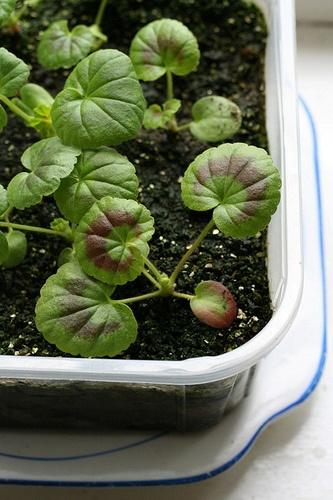
When transplanting your queen, be sure to add a decent layer of drainage to the bottom of the planting container. If you do not use special purchased soils, then prepare the planting mixture yourself: take garden soil, add peat and sand. Geranium does not like dense soils. Before transplanting, it is advisable to scald the prepared substrate.
Trimming
In winter, due to lack of sunlight, the shoots of royal pelargonium become elongated. To maintain the shape of the bush and increase bushiness, it should be pinched, and if the shoot has already stretched out, then cut it off. By March, pinching and pruning must be stopped, since in April the plant will begin to produce buds.
In summer, pinching is carried out to maintain the compact shape of the bush after flowering. And during flowering, carefully remove faded flowers.
Reproduction
Queen pelargoniums are propagated vegetatively - by cuttings. And, if our grandmothers rooted zonal pelargonium in a glass of water, then this aristocrat will not take it that way, its stems will become soft and then rot.
The most suitable period is the end of August, beginning of September, when the summer heat subsides. The tops of the shoots are cut off into about three nodes and allowed to dry for a couple of hours. Then they are sprinkled with a peat-sand mixture or sand, watered with heteroauxin or root. Cassettes or bowls are placed in partial shade.
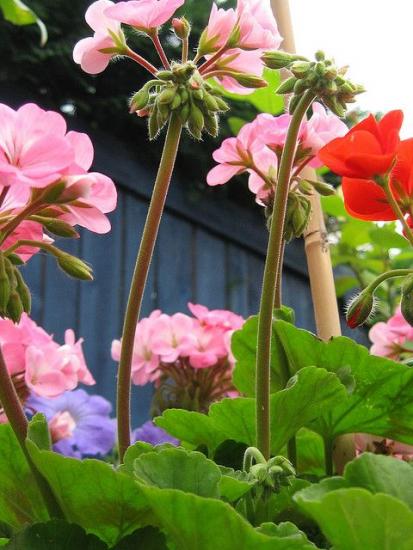
Watering rooting cuttings of royal pelargonium should be done moderately, only when the substrate dries out. You can’t pour it on the stems; it’s better to direct a stream of water around the perimeter of the pot.
When the cuttings take root, growth will appear, which should be pinched over 3-4 pairs of leaves. Then they are transplanted into the prepared planting mixture, cared for according to the rules and wait for flowering next summer.
Increasing flowering time using grafting
The flowering period for queens is shorter than for zonal ones. Their bush is also not so tall. It is known that grafting plants of different vigor changes the growth pattern. Thus, by grafting medium-sized varieties of fruit-bearing plants onto a dwarf rootstock, we can achieve earlier fruiting than on our own roots.
In addition, a grafted cutting, as a rule, is less inclined to stretch and more likely to branch, growing a compact bush. These are the qualities needed to graft royal pelargonium onto a very tall zonal one.
In zonal pelargonium, the crown is cut off at a height of approximately 60 cm. This remaining trunk must be mature. The lower end of the scion (royal pelargonium stalk about 10 cm) is cut off with a sharp knife using a wedge. Both branches should be approximately the same diameter.
A V-shaped incision of 2 cm is made at the top of the zonal bole.A pointed scion is inserted into this split; the branches are aligned flush with each other along the edges of the split. The resulting joint is then wrapped with grafting film. It is better to start wrapping from top to bottom with a slight overlap, grabbing a little of both the scion and the stem.
For the growth of a grafted bush, it is advisable to install a support and constantly remove buds from the stem. If suddenly the royal pelargonium immediately begins to form buds, then it is better to pinch them off, otherwise all the energy will be spent on flowering and not growing together.
So, having considered the features of caring for royal pelargonium Houses, we focused on the differences between growing and reproduction from a previously widespread species of zonal pelargonium. An interesting way to increase the duration of flowering is proposed - grafting.

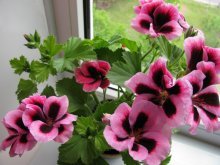
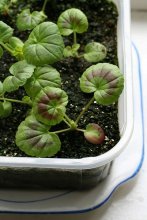
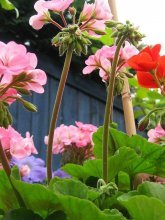
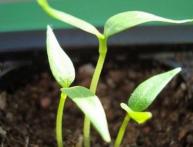
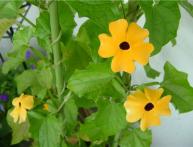
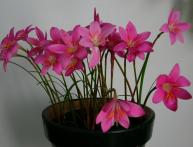
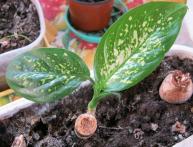
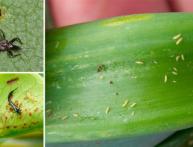
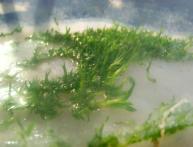
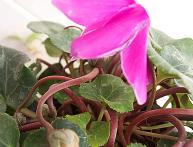
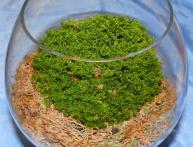
Comments
I had royal geranium. It’s a pretty nice plant, but it doesn’t look like geranium at all; there is no distinctive aroma from the leaves and flowers at all. I didn’t feel that she was capricious in her care. She grew and delighted with beautiful flowers.
It's good that there is no smell. I like these flowers in appearance, but I can’t stomach their smell. That’s why I didn’t dare to plant it myself. But I know that in the summer they are even planted outside, so I agree with you about the capriciousness. Why don't you have them now?
Oh, I like these flowers. I have long dreamed of breeding them. After reading the article, I now know exactly which flowers I will start planting in spring. Of course, it has its own nuances, but the good news is that it is being well accepted and growing in our region.
Nowadays there are no different types of geraniums.I remember that when I was a child, my grandmother had only one pink color and it grew in a large pot and bloomed well, so I can argue that geraniums need a tight pot for best growth.